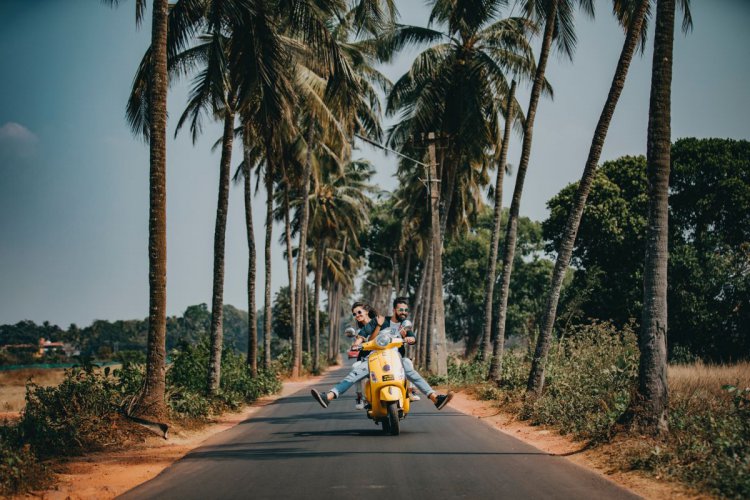Pretty much every industry is affected by the Covid-19 crisis, but the travel and tourism industry has been dealt a brutal blow. The pandemic continues to have a severe impact on air travel, as border controls and travel restrictions remain in place around the world.
Travelling has come to a standstill. For the 1st time in history, close to 90% of the world’s population now lives in countries with travel restrictions. Travel hubs like Changi airport and Dubai International airport and their respective airlines with the vast majority of their flights grounded and some terminals shut may not recover so quickly.
Singapore Airlines has 10 out of 200 planes flying passengers with 95 percent of the fleet deployed for cargo-only services and others parked at Changi Airport and in Australia. This is the biggest challenge that Singapore tourism has faced in its 56-year history. As a country, Singapore has shown great resilience in fighting many global challenges. This is a challenge of our generation. We’re battling a formidable and invisible enemy. Fear of humans and crowded places will be etched in our hearts for the rest of our lives.
It’s impossible to predict when or how travel might resume, let alone whether we’ll feel comfortable traipsing around the world again with the kind of carefree insouciance to which many of us have become accustomed to.
I typically clock over 150,000 miles a year travelling on work. However, this year I’ve only managed 10,000 miles early March just before the entire world went into lockdown. Traveling for me has always been a pathway to happiness, be it for work or pleasure. It’s been very easy to take this lifestyle for granted. I’ve never been so grateful and aware of what a privilege it has been to globetrot until now.
With social distancing and hygiene practices in place, what will that mean for the travel and tourism industry moving forward? Well, the Singapore passport allows citizens visa free or visa on arrival access to 190 countries. However, now we can’t travel anywhere. With close to 40,000 cases in Singapore we may for once have an undesirable passport – at least for a while, as some countries even if they are open may restrict Singapore citizens or put us through stringent test protocols.
It could be a year and a half to two years before travel picks back up. No one can say for sure if we’ll see a U-shaped recovery, or more of an L, or even a W, if there’s a second wave of coronavirus cases. One thing is for sure, air travel will be slow to recover and travelling will never be the same again.
The footloose weekend getaway to Koh Samui or Bali we’ve come to take for granted is pretty much over until a vaccine is developed, or when we’re declared Covid-19 free. Even after a vaccine is developed, travellers may need to show proof of negative Covid-19 – sort of a pass or certification, like the yellow fever certificate for travelling that I have on my person when traveling to Africa and South America.
Travel must come back, for many livelihoods and economies depend on it. An estimated 25 million aviation jobs and 100 million travel and tourism jobs are at risk, along with financial losses of up to USD2.7 trillion of the world’s GDP. Jobs from fresh produce suppliers to restaurants and hotels, to taxi drivers and tour operators who ferry tourists from airport to hotels and so on, millions rely on business generated by tourists and business travellers. Between five and seven years’ worth of industry growth will potentially be lost.
The world can’t stay in lockdown forever. Travel is not just essential for the wanderlust among us but to sustain the livelihoods and economies dependent on it. The vaccine is probably one year away, perhaps more, from being distributed worldwide. The way we travel will be dramatically transformed, we need to adjust expectations, lifestyles and norms.
Fear of humans and crowded places will be etched in our minds for some time. Personal space will become important. Till there is a reassurance from senior health officials and scientists, the number of deaths down or none within the country and region, people will be afraid to attend concerts, conventions, exhibitions where there are large crowds. We’ll see more people adopting a disinfecting regimen of cleaning their sets, hand rest, etc. before flying. The use of a face mask will be a must, perhaps even gloves, the centre seat will likely be empty, beverage service may be suspended, etc. The simple pleasures of flight travel will cease to exist.
Before the masses feel comfortable taking to the skies again, staycations for smaller countries like Singapore and road trips for US, European countries etc., will likely be popular in the interim. In the short term, the economic impact caused by this virus will also be a key factor in keeping travellers closer to home, with non-essential travel taking a back seat. Domestic travel is not only a less scary prospect but cheaper and hassle free compared to travelling somewhere far.
Hygiene will be the new game-changer because in this unprecedented time, governments and industry players have a unique opportunity to redefine travel and build a more sustainable, agile, and resilient industry. Every aspect of travel will be affected, from the smallest to the simplest elements to huge changes. Automation across the entire sector will be the norm.
Resumption of travel will be slow, careful and in a highly phased manner. The question now is – how do you stimulate demand and create incentives to get people travelling while reducing exposure? People fear that recycled air and close quarters will make airplanes a breeding ground for Covid-19 infections. To establish trust among passengers and guests, airlines and travel accommodations that provide superior hygiene standards, perhaps like hospital standards, will stand out in the new normal.
This applies as well to companies across sectors, who must now reimagine their businesses with a safety comes first mentality. Regular temperature checks, disinfection protocols, hand sanitiser stations, and providing face masks at the premises, reconfiguration of workspace, etc. are some of the measures companies should incorporate.
Increased expectations of hygiene measures may also see new hotel properties reducing the number of rooms on floors, converting them into private suites, staffed by dedicated concierge services who ensure personalised social distancing measures for guests at the hotel’s more public facilities such as the pool or gym. Electronic keys would be disinfected after each use and even the use of digital QR code to open a door is a possibility, if it does not already exist.
Businesses will probably cut back on travel and look to do more virtual meetings. Some travellers, business and leisure travellers, may prefer AirBnB rentals over hotels, as the latter are perceived to have a higher intake and turnover of guests. These rentals too must ensure sanitised premises through contactless measures and regular cleaning.
International air travel changed drastically post-9/11, with heightened levels of security checks in place at airports around the world. Similarly, the threat of Covid-19 means more healthcare protocols for check-in and disembarkation at airports. Although temperature checks at airports may become the norm, it might not catch cases where the person is asymptomatic. Without aggressive testing and contact tracing, and isolation it will be very challenging for airlines to reassure travellers there’s no one with Covid-19 on board. It just boils down to our risk tolerance.
Under the World Economic Forum (WEF)’s Known Traveller Digital Identity initiative, travellers will be able to securely obtain and store verifiable health credentials such as immunisations and health status into digital identity wallets. This enables border officials to conduct risk assessments in advance of the journey and do away with long queues and bottlenecks at airports.
Technology tools like electronic passports and IDs, boarding passes, medical screening before boarding and disembarkation, using robots for cleaning may be deployed widely to limit physical contact between people and surfaces. Hotels, airlines, and especially cruises will have to determine how to give travellers personal hygienic spaces they feel they can control.
The large customs/immigration checkpoint queues that have become commonplace at many major airports pose an even bigger challenge now. However, thanks to digital technology, the end-to-end travel experience will be changed with touchless travel from airport to hotel being the new norm to reduce queues, reduce surface contact and risk of infection. The cost of implementing such systems are high, especially for airports in emerging markets, hence social distancing-friendly queuing systems will have to be implemented here but the process of clearance may take hours.
The use of digital identity and biometrics technologies could restore trust while also ensuring a seamless journey. However, these tools will only be effective if users feel that their data is protected, otherwise it can be pervasive and invasive. Privacy, consent and transparent data governance must be at the heart of any technical solution. But will this, along with contact tracing apps, lead to digital surveillance by governments in the guise of public safety?
Till today there are no industry guidelines on health screening protocols or agreement between governments and airlines on the acceptable level of risk for reopening borders or allowing individuals to travel.
Travel will return gradually over the course of months, if not two to three years, and people will probably stick to local destinations for a while. This will be a lengthy travel hiatus. Till this virus is contained, international travel won’t be a top priority for most of us, partly due to fear, but also partly due to the collapse of the economy.

















